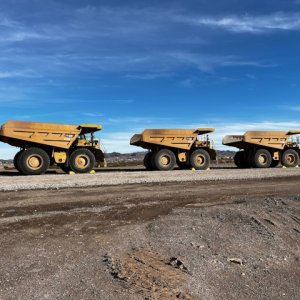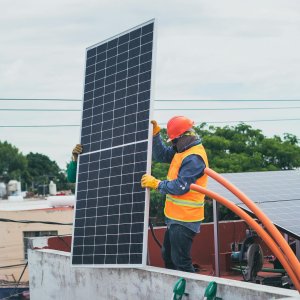How Hydrogen Ties Into the Future of Mining

STORY INLINE POST
Q: What business opportunity underpins ENGIE’s strategy to develop industrial-scale hydrogen-based solutions toward carbon neutrality?
A: In general, if you look at a company's carbon emissions, for most companies it originates from different sources. They have been putting in solar and wind generation assets to mitigate their carbon emissions in relation to their electricity consumption. Nevertheless, for most sectors, including mining, the real challenge is how to decarbonize fossil fuels being used for heavy-duty transportation, heat applications and others. There is no real solution today; they are looking to electrify some processes, but some cannot be electrified directly. This is where hydrogen can help. For example, hydrogen can be used within a fuel cell, which can transform the hydrogen back into electricity by combining it with oxygen, producing only water as emission, at a higher efficiency than a combustion engine.
Q: What advantages does hydrogen technology bring to the table?
A: Productivity is a key advantage. Miners need to be productive with their machinery to obtain the lowest possible cash cost because they compete in the commodity market and need to keep their costs as low as possible. Therefore, if a mining operation needs to operate trucks 24/7, hydrogen technology is useful because fuel cell technology is more reliable than combustion engines. The technology is modular and as such a Mining Truck or Electricity Genset can have multiple fuel cell stacks. If one breaks down, the machine can still operate. Another advantage is sustainability, a key element that many investors in mining companies are demanding and paying attention to.
Q: What are the main challenges to run a haul truck with a high load capacity on hydrogen?
A: The main challenge is that this truck is designed for a diesel engine and some of the systems are mechanical. For example, the truck employs a hydraulic system which is currently powered mechanically. To facilitate the switch to hydrogen, we need to change the truck platform to a fully electrical one. We are expecting that in the future the fuel cell solution will be fully integrated at the truck factory. Until then, one of our challenges is to integrate this new technology within an existing truck built for a diesel engine. Another challenge is hydrogen storage because volumes are higher. If you want the same amount of fuel that you had with diesel, you will most likely need three to four times the volume of diesel. Therefore, we need to switch from compressed hydrogen gas to new technologies that are not yet fully developed for commercial use. These technologies could be cryo-compressed hydrogen or we could store hydrogen in a chemical state, which could be ammonia or methanol, and then break it down for use. Another option is to change the mindset of how these mining trucks are operated and generate an innovative refueling strategy. In addition, everything needs to comply with hydrogen norms and standards. However, these standards do not exist in all countries today and therefore, we have to work closely with the government authorities to elaborate the necessary standards to validate such operations.
Q: What are the benefits of incorporating hydrogen into haul trucks used in mining operations?
A: The main benefit is sustainability. Today, these trucks burn an average of 3,000 liters of diesel a day, emitting tons of CO2 into the atmosphere. If we translate this on a global scale, there are between 40,000 and 50,000 mining trucks doing this. Moreover, hydrogen trucks would provide higher productivity rates and energy efficiency that allow for lower total costs of ownership. If mining companies start incorporating hydrogen into their trucks, they would not only be mitigating their emissions in the mid and long term, they would also have a lower total cost of ownership in their operations.
Q: What are the benefits of generating hydrogen in remote mining locations?
A: Another advantage hydrogen has is that eventually it can be produced anywhere. This is because many companies in countries like Chile, Mexico, South Africa and Australia have access to good renewable resources such as solar. This is a double advantage because companies can both produce and store energy close to their mining operations, resolving problems for mines that are located in remote regions where diesel and/or grid infrastructure are a challenge. Moreover, portion of the solar plant, can also be used to produce the electricity that mines need. Companies can also combine solar with wind or hydro power, depending on which resources are available in the region.
Q: The first hydrogen-powered truck created in cooperation with Anglo American is expected to operate in 1H21. How will you measure the success of this pilot project?
A: There will be several detailed measurements to ensure the solution is working properly. The Mining truck will have to go through some stress tests to show that the truck complies with the operational requirements of a mine. More specifically, in relation to Engie’s scope, which is the H2 supply chain, we are going to check if the hydrogen supply chain and the refueling of the truck works efficiently so companies do not jeopardize their productivity. We are also going to measure safety compliance, within the H2 supply chain, through a variety of testing. More than a final product, this is a proof concept that is part of the development process of getting to a commercially viable hydrogen mining truck solution, which can be used not only by Anglo American but by other mining companies that want to start decarbonizing their operations.
Q: How long will it take before this solution can be made available on a large commercial scale?
A: I believe that with the technologies that exist today, this could become a reality very fast. The key challenge remains the integration of the technology into the mining truck. As a first step, we need the original equipment manufacturers that build these trucks to make some changes to their platforms so that these new power trains can be integrated more easily, and eventually hydrogen mining trucks could be delivered with an already integrated fuel cell powertrain, similar to the road trucks that are currently entering into the market. I would say that between 2025 and 2030 we can make this solution available to mining companies.
Q: What does ENGIE want to accomplish in 2021?
A: Together with our partner Anglo American, we want to show the world that a hydrogen mining truck is feasible and from there the sky is the limit (or not even, if we look at future space developments). We are also actively looking for new partnerships, with mining companies but also with technology providers and different stakeholders within the mining segment. Moreover, we want to identify and elaborate other hydrogen solutions for the mining sector in regard to mineral processing, heat, rail and maritime transport. Another goal, which we are currently pursuing with our HyEX project in Chile, is to make ammonium nitrate, that is used in explosives for the mining sector, based on green hydrogen. ENGIE believes there are a variety of applications and we want to expand in these directions.
Q: What trends have you observed in the mining industry and what are the challenges the mining industry needs to address?
A: In 2017, we began to see a clear trend in the mining sector regarding social and climate change goals. We are seeing concrete actions with large amounts of money being invested in mining companies that are implementing these objectives. There is also a clear trend that the minerals that mining companies sell, need to be decarbonized in order to enable the energy transition. For example, without green copper and green alimunium as base materials for solar panels, it will be hard to have a full energy transition with solar power. I believe this is where the mining sector and the energy sector are getting increasingly more interconnected, because they have to address the challenge of climate change together. The other point I would like to underline is that the current commitments that mining companies have made are related to scope 1 and 2 emissions. However, for most of the mining companies the highest emissions are in scope 3, which amongst others includes maritime transport, steel making, etc. I believe this is where our greatest challenge lies, and why we urgently need to work together with different stakeholders to address these scope 3 challenges.
ENGIE is a global reference in low-carbon energy and services. Its purpose is to accelerate the transition toward a carbon-neutral world, through reduced energy consumption and environmentally-friendly solutions.








 By Paloma Duran | Journalist and Industry Analyst -
Fri, 01/29/2021 - 13:54
By Paloma Duran | Journalist and Industry Analyst -
Fri, 01/29/2021 - 13:54















